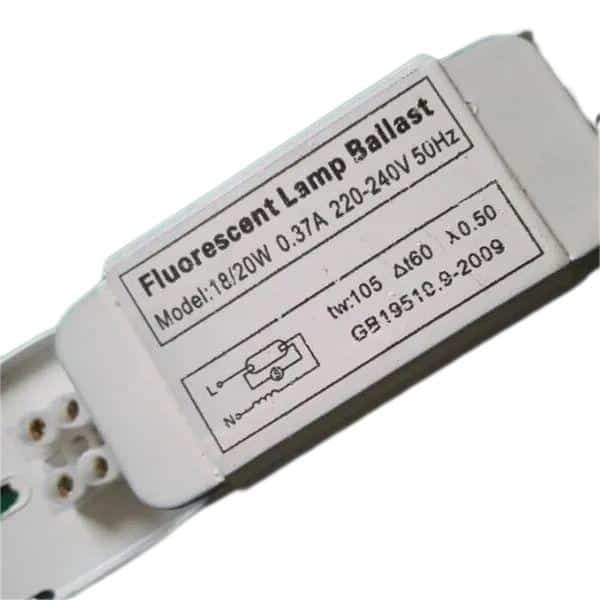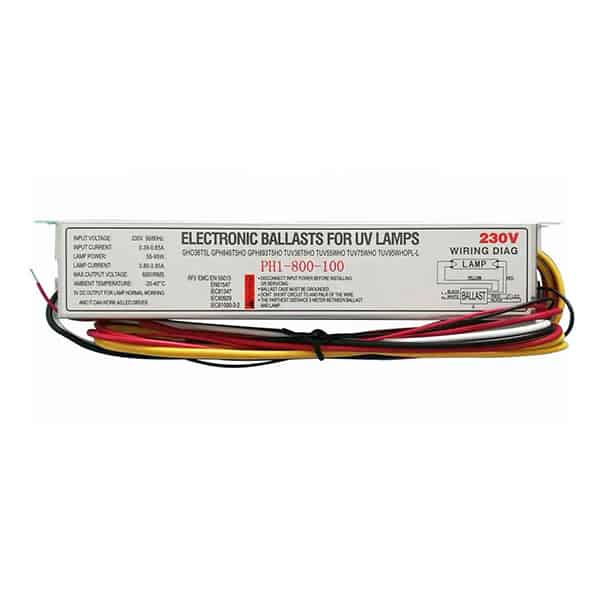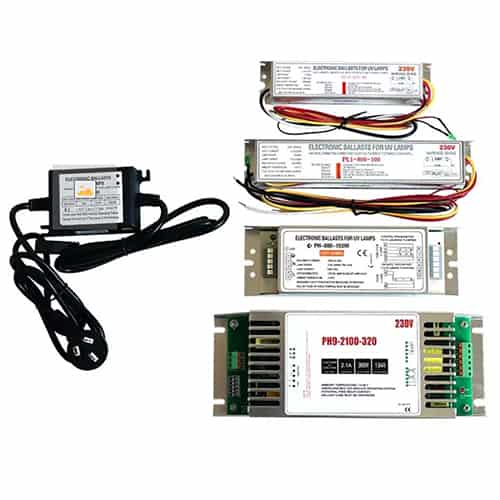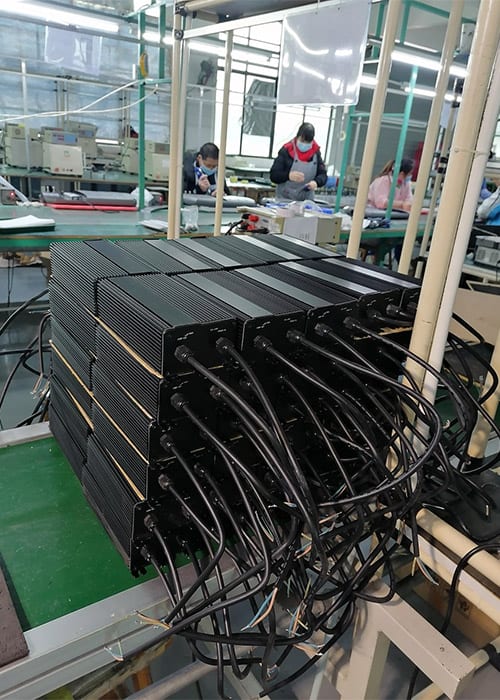The problem with tube lights is that if you don’t have a lamp ballast, they can get unstable power and cause problems like overheating, flickering, and burning out. The solution to this problem is to use a ballast to control the electricity and make sure the light works right.
The job of a ballast in a tube light is to control the electricity that flows through the light so it doesn’t use too much electricity once it gets started and so it works right.
To understand why a ballast is so important, we need to talk about what it does and why you need it for a tube light.
Why is a ballast necessary for a tube light?
A ballast is essential for tube lights because it provides current control and stabilizes the lighting process. Tube lights, especially fluorescent ones, require a high initial voltage to start. This initial surge of electricity is needed to create an arc between the two electrodes in the tube, igniting the gas within and producing light.
However, once the lamp is lit, it requires much less voltage to maintain illumination. If the high current were allowed to continue unchecked, the lamp would overheat, burn out, or even pose safety risks. This is where the ballast steps in—after starting the light, the ballast regulates and reduces the current, preventing damage to the lamp and extending its life.
For example, without a light ballast, when you switch on a tube light, the surge of electricity could overwhelm the lamp’s delicate components. The result? A short-lived tube light that needs frequent replacement. The ballast, therefore, ensures a stable and consistent flow of current, preventing such issues.
How does a ballast improve efficiency in tube lights?
Ballasts don’t just protect the tube light; they also make it more energy-efficient. The primary way they achieve this is by regulating the amount of power that reaches the lamp. Without a ballast, the tube light would continue to draw excessive electricity, wasting energy and driving up power costs.
- Energy Regulation: By controlling the current after the lamp has started, the ballast ensures that only the necessary amount of energy is used to maintain light output. This saves energy, making lighting systems more efficient. In large commercial spaces where multiple tube lights are used, these energy savings can be substantial.
- Reduced Flicker and Noise: Especially with electronic ballasts, flickering and noise are minimized, improving the overall lighting experience. Traditional magnetic ballasts tend to produce a hum or buzzing sound, and the light may flicker as it starts up or during operation. These inefficiencies are eliminated in modern electronic ballasts, which operate at higher frequencies. The result is smooth, uninterrupted lighting that’s easier on the eyes and far more pleasant in indoor environments.
Moreover, the improved efficiency of electronic ballasts translates into less heat generation, which means they can also help keep lighting systems cooler—an added benefit for both the lamps and the surrounding environment.
Types of ballasts used in tube lights
There are two main types of ballasts used in tube lights: magnetic ballasts and electronic ballasts. Each has its characteristics, benefits, and drawbacks.
- Magnetic Ballasts: These are the older, more traditional type of ballasts. They operate using a core and coil transformer to limit the current flowing through the lamp. While magnetic ballasts are durable and cost-effective, they have some downsides. They tend to be bulkier and produce a noticeable hum during operation. They also cause the light to flicker when first switched on, which can be bothersome in work or living environments. Magnetic ballasts are still in use today, but they are increasingly being phased out in favor of electronic ballasts, particularly in energy-conscious applications.
- Electronic Ballasts: In contrast, electronic ballasts use solid-state electronic circuitry to regulate the current. They are far more efficient than their magnetic counterparts because they operate at a higher frequency, which eliminates flicker and noise. This higher efficiency makes electronic ballasts more environmentally friendly, as they reduce energy consumption. Furthermore, they are more compact and lightweight, making them easier to integrate into modern lighting fixtures. Many modern homes, offices, and commercial buildings have switched to using electronic ballasts due to their superior performance, longer life, and reduced environmental impact.
Both types of ballasts perform the same essential function—regulating current and voltage—but electronic ballasts have clear advantages in terms of energy efficiency, operational smoothness, and overall user comfort.
Ballast’s role in extending the life of a tube light
One of the key benefits of using a ballast in tube lights is the extended lifespan it offers the lamp. Ballasts play a crucial role in ensuring that the light operates within safe parameters, thereby preventing premature wear and tear on the lamp’s internal components.
- Overload Protection: A significant function of the ballast is to prevent overload. By limiting the current that flows into the tube light, the ballast ensures that the light does not overheat or sustain damage from excessive current. This is particularly important because once a fluorescent lamp is lit, it requires less energy to stay on than to start up. A properly functioning ballast adjusts the current to this lower level, ensuring the lamp operates safely for a longer period.
- Temperature Management: Ballasts also help to regulate the temperature of the lighting system. Fluorescent lamps and other types of tube lights generate heat as a byproduct of their operation. If this heat is not controlled, it can cause the components of the lamp to degrade over time. By managing the flow of electricity, ballasts keep the lamp operating at an optimal temperature, which helps to maintain the integrity of the lighting system and prolong its usable life.
Moreover, electronic ballasts are particularly effective at reducing the wear on lamps because they provide a more stable current. This stability means that the light can burn more evenly, resulting in fewer instances of flickering or dimming and, ultimately, a longer-lasting lamp.
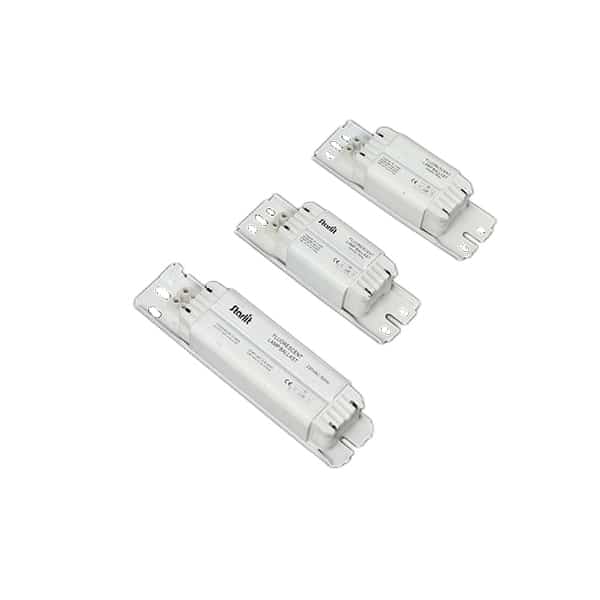
Final Words:
you need a ballast for a tube light. It makes sure the light doesn’t burn out, and it makes the light work better and last longer. Whether you use a traditional magnetic ballast or a more modern electronic ballast, you need a ballast to make a tube light work right.

